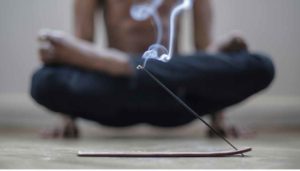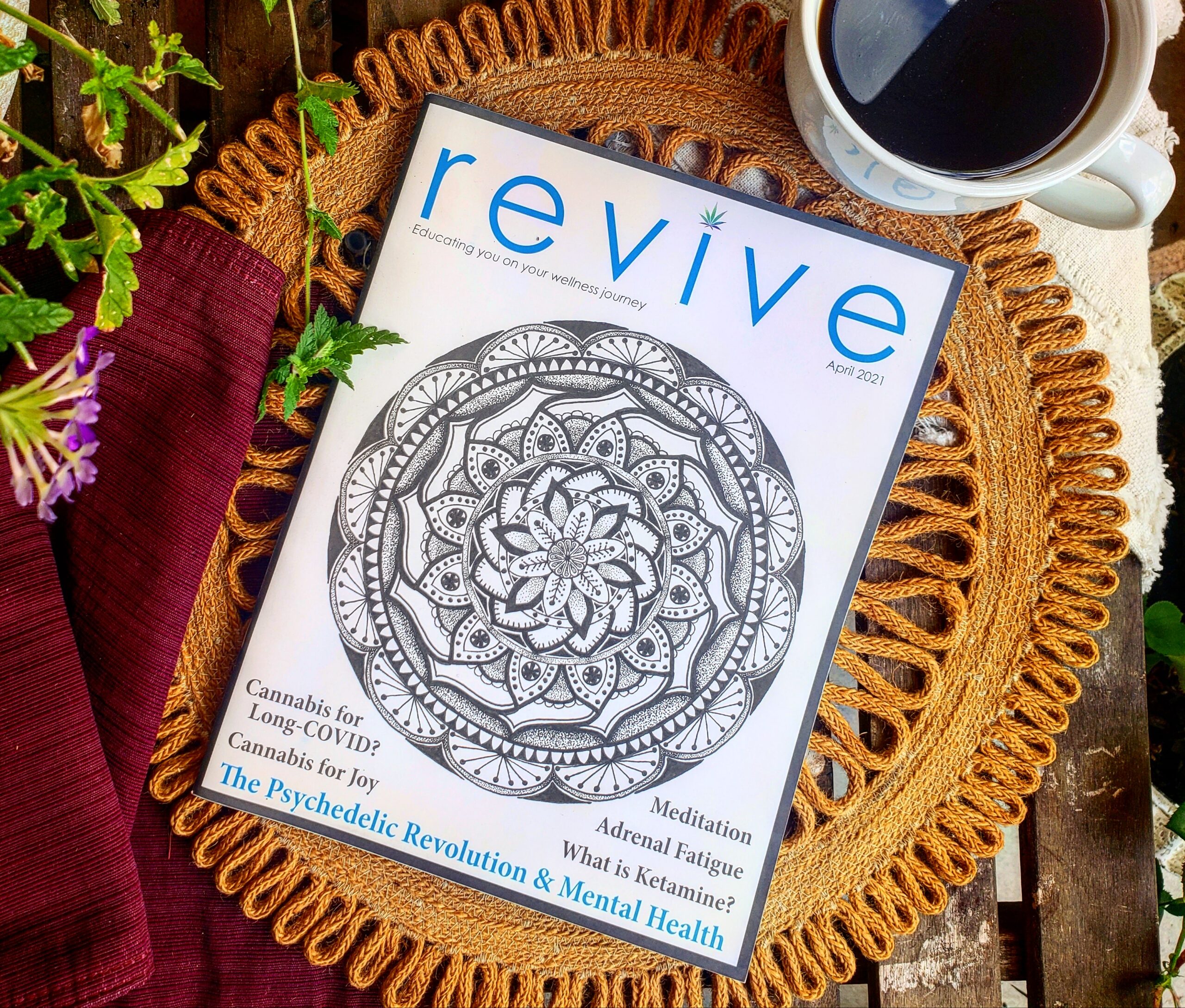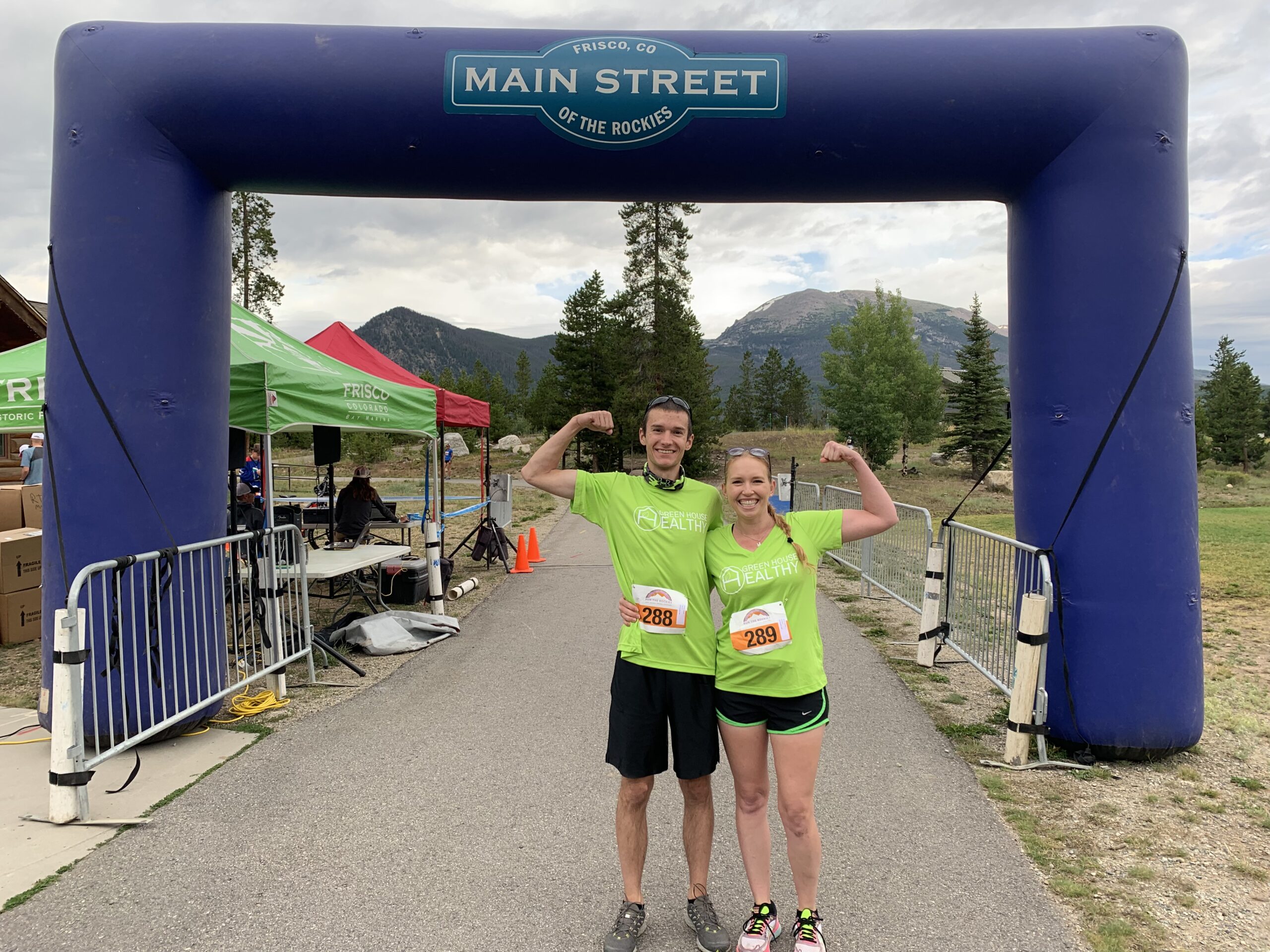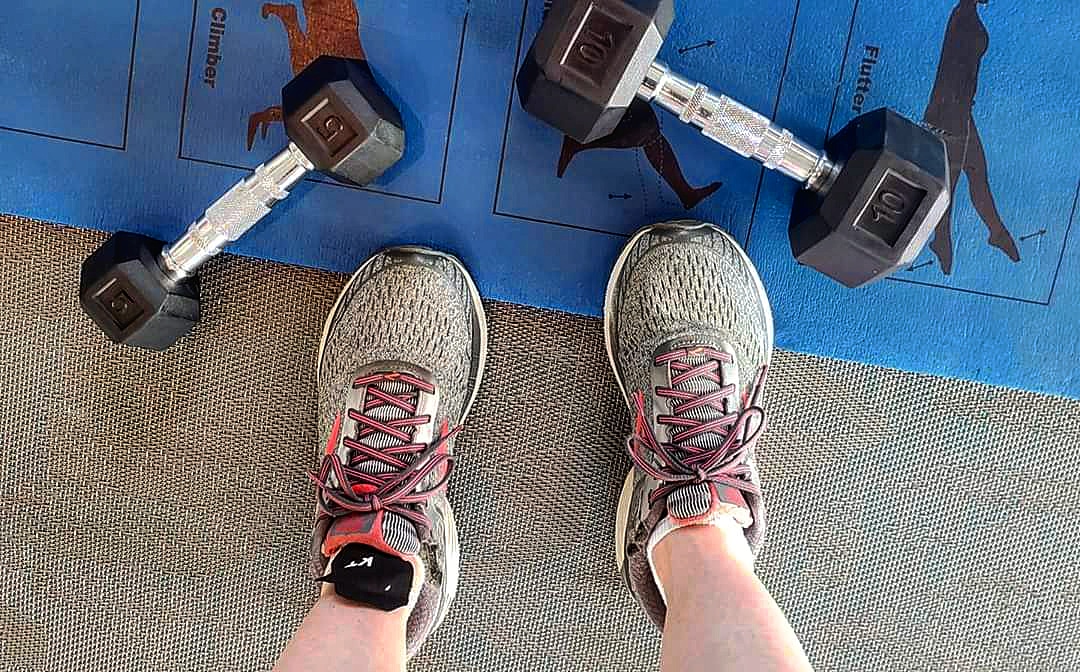Staying fit is hard as it is. And when you’ve got chronic pain, it can feel nearly impossible.
In my twenties, finding the motivation to exercise was easy – as a trail runner addicted to the thrill of high-intensity workouts, I never missed a morning jog, hot yoga class or hike. So when a series of injuries and later diagnosis of Hypermobility Spectrum Disorder with high probability of Ehler’s Danlos Syndrome sidelined my goals, I had a choice: Accept a sedentary lifestyle, or try an entirely new approach to fitness.
The road has been mostly uphill and I’ve made countless mistakes along the way. But over time, I learned a new approach to fitness that strengthened both my body and mind.
This post is for anyone who, through injury or illness, has had to change the way they move through the world. If you suffer from any of the numerous disorders falling under EDS spectrum, these ideas may be helpful. If you’re an athlete who’s been sidelined by injury, you may find value in this, too. I’m not a medical professional or personal trainer by any stretch of the imagination (and you should of course always check with yours before making any change in your fitness routine or taking any advice). I’m just a person who knows what it feels like to be at peak strength one moment, and bedridden the next. Or measure your progress in months and years, rather than in days and weeks. Or to start from square one countless times.
The ability to move the body with ease is a gift. And while active may look different now than it did before, that doesn’t mean any of your internal badassery has changed. Sure, we may not be able to move like we used to. But with time, guidance, and some mental gymnastics, I’d like to think we can become the strongest version of our current selves, no matter what that looks like.
Here are the top six tips, tricks, and tools I’ve used to help me find success on my fitness journey while living with chronic pain. I hope they help you on your healing journey!
1.) Accept your “new normal”
Truth bomb: Injury and illness changes us. There’s no getting around it. The change may be slight or it may be profound, but the sooner we accept it, the sooner we can move forward.
A mistake I made in the beginning of my injury recovery was trying to return to my old activities as soon as possible. Running had become part of my identity, and I was determined to hit the trails as soon as my fragile feet hit the ground.
It didn’t take me long to realize this wasn’t going to work. After a few unsuccessful “runs” left me bedridden for days, it became clear that the beast-mode mentality which served my young and healthy joints did not serve my new, very fragile ones. No matter how much my brain craved the satisfaction of high-intensity exercise, my body just wouldn’t cooperate.
If this has been your experience, take some time to sit with your body and pay attention to what it’s telling you. Redirect your focus to the here and now and get to know the strengths and limitations that your body has in the present moment. Just like the earth we live on, our lives have seasons. Today’s pain can become tomorrow’s pleasure – but first, we have to accept where we are so we can determine where we’re going.
2.) Flex your mind

It can be jarring when what’s worked for years doesn’t work anymore. Our bodies are our home, and injury can make it feel like you’ve woken up in someone else’s apartment. Everything feels unfamiliar, scary, and not quite right.
The key to pushing through this feeling can’t be found in the gym or on the trails – it’s found right between your ears. The wise sage with the killer quads and the answers you’re seeking is within you, and she’s spent years training for this marathon. Conveniently, the same important lessons your sport taught you in the past are the ones that will become just as relevant to you now: Patience, stamina, focus, and strength are all incredible tools to guide you. Set a pace that serves you best and adjust it based on how you feel that day. Just like any sport, when it comes to healing and getting back to the activities you love, 90% of your success will come from your mind.
3.) Chair workouts are your new best friend
When your doctor gives you the green light to exercise again, you may want to run full-speed ahead up your favorite hill or dive into a Bikrahm class — but it’s important to ease in, get creative, and consider some outside-the-box options to condition tired muscles and avoid further injury or complication.
Enter: Chair workouts.
Think it’s not possible to get a great workout from a chair? Think again! Chair workouts have come a long way since their humble beginnings, and they certainly aren’t the same routines our grandmothers did in the eighties – not that I’m knocking grandmas or fabulous 80s style. (Never underestimate the power of a neon track suit to lift your workout enthusiasm. But I digress…)
After a particularly stubborn and drawn-out ankle sprain in 2019 left me out of commission for nearly six months, chair workouts became a welcome reprieve from the couch. Surprisingly-challenging and easily-customizable to accommodate a wide range of capabilities, they are an excellent way to build base fitness and condition muscles during long periods of recovery or recurring chronic pain.
A quick search on YouTube or Instagram will yield dozens of videos and routines to try. (I love Caroline Jordan Fitness and Chair Workouts).
Now, if I’m having a bad week, feel too inflamed in my lower extremities, or just want to be gentle on my joints, I fall back on my trusty chair workouts to keep me on track.

4.) Embrace braces
When I was able to get back to the gym again, I was very resistant to the idea of using any type of brace or alignment device. I was afraid of appearing weak, and was worried about what others around me might think or say.
But when tendons in both of my wrists tore shortly after breaking my hip for the second time, I realized I had two choices: Give up, or put on my big girl panties (and new braces) and accept an even newer new normal.
Tendon injuries are tricky. They can take months or even years to heal — and even when they do, pain and weakness often remain. After healing, I had very little dexterity and couldn’t hold weights, so I began strapping whatever I could find – water bottles, cans of beans – to resistance bands and performing shoulder raises while they dangled wildly around my knees. (I don’t recommend this for a multitude of reasons. There are better ways to lift while injured. But on a side note, you don’t know determination until you’re willing to be the girl at the gym with random kitchen items strapped to her arms.)
One day, in desperation and pain, I purchased a pair of cheap braces from a Target pharmacy and was amazed by how the simple addition changed my entire routine. Over time and with the advice of a hand therapist, I found a pair that worked perfectly for me. They allowed me to lift light weights while keeping my wrists safe from additional injury, and because of this I made much swifter progress. I wish I’d been open to wearing braces sooner, because this simple trick changed my life. After a year, I traded in my aforementioned cans of beans for ten pound weights and never looked back (except to make hummus).
5.) Hire a Personal Trainer
Eventually, I realized I needed a little help. I’d accomplished all the progress I could safely accomplish on my own, so I hired a personal trainer with a background in physical therapy to assess my potential and jumpstart my progress.
Best. Decision. Ever.
At the end of the day, nothing compares to the knowledge, advice, and support of a trained professional. Having someone who understands your current limitations and still believes in you can do wonders for your confidence after a setback — and it never hurts to have someone watching out for your safety, stability, and form while trying new forms of exercise. With her guidance, I learned helpful ways to push my limits while preventing injury at the same time. She also created unique routines designed to build stability and awareness around my joint alignment and muscle control. Over the course of a year, I saw vast improvement.
If leaving your home isn’t an option, there are thousands of trainers who offer live virtual sessions online. And if this still isn’t an option for you, consider other forms of coaching. I have experienced enormous improvement in mindset through engagement with life and wellness coaches, and many of the lessons they taught me translated to more mindful, enjoyable gym sessions later down the road.
6.) Don’t Give Up
Let’s be honest: This may be the simplest, but toughest, thing to do.
When you wake up in the morning and feel terrible, the last thing you want is an hour of painful PT just to maintain what feels like the most basic possible level of fitness. And depending on your condition and challenges you’re facing, what you’re able to accomplish may look different day-to-day.
Some days, my fitness routine involves an hour-long bike ride in the morning and a weight-lifting session in the afternoon. Some days, it looks like flexing my ankles while lying on the couch as I push through yet another stab of pain or muscle spasm. I never quite know what tomorrow’s going to look like – but I do know I’m going to make the best of it, and that’s what keeps driving me forward and feeling good about myself.
If there’s one thing I’ve learned on this path, it’s that success with physical fitness lies somewhere between accepting the body’s limitations and constantly striving towards something better. As athletes, we may never get back to the activities that once defined us —but the great thing about life is that it surprises us. We never know when today’s misery can turn into tomorrow’s success with the right resources and the right attitude






